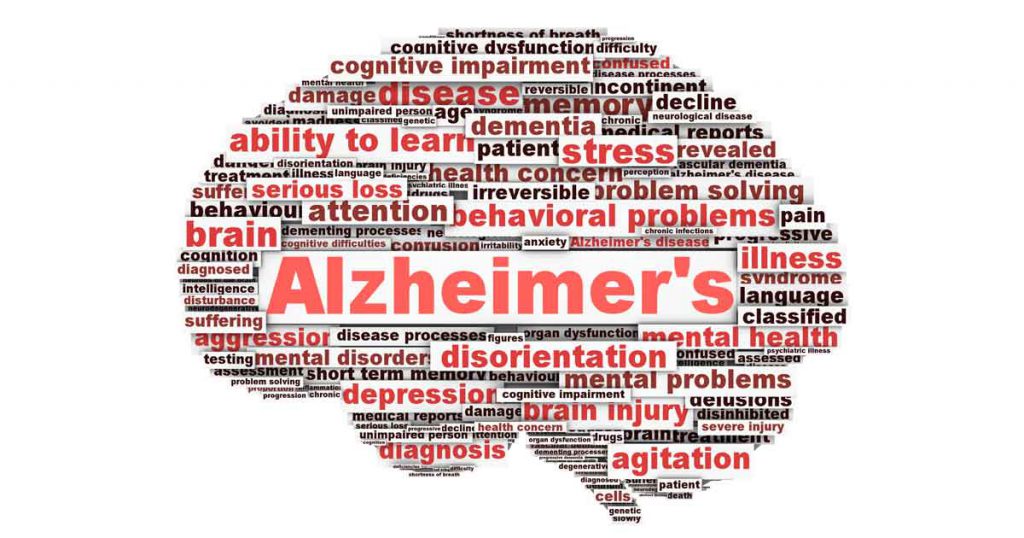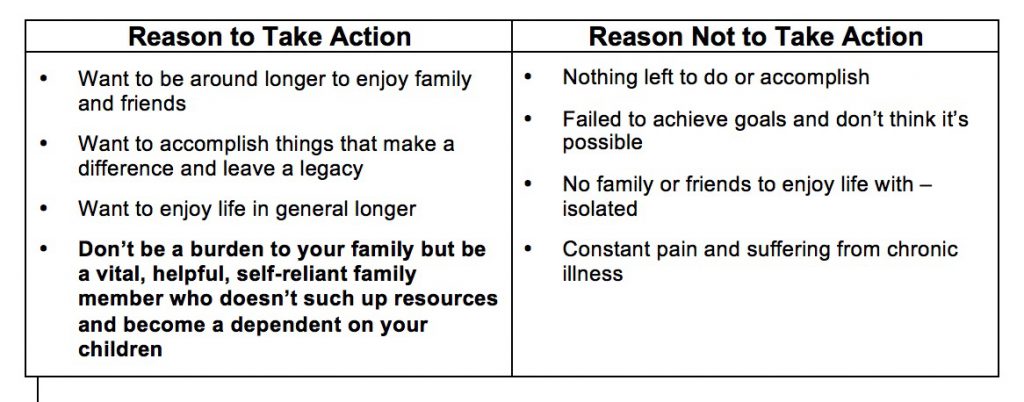
Grain Brain by Dr. David Perlmutter
The Surprising Truth About Wheat, Carbs, and Sugar – Your Brains Silent Killers
Includes Grain Brain Recipes, Grain Brain Cookbook, and Grain Brain Food List
In his book he addresses the causes of…
“ADHD
anxiety and chronic stress
chronic headaches and migraines
depression
diabetes
epilepsy
focus and concentration problems
inflammatory conditions and diseases, including arthritis
insomnia
intestinal problems, including celiac disease, gluten sensitivity, and irritable bowel
memory problems and mild cognitive impairment, frequently a precursor to Alzheimer’s disease
mood disorders
overweight and obesity
Tourette’s syndrome”
He offers a quick assessment of your risks for the above diseases…
“1. I eat bread (any kind). TRUE/FALSE
2. I drink fruit juice (any kind). TRUE/FALSE
3. I have more than one serving of fruit a day. TRUE/FALSE
4. I choose agave over sugar. TRUE/FALSE
5. I get out of breath on my daily walk. TRUE/FALSE
6. My cholesterol is below 150. TRUE/FALSE
7. I have diabetes. TRUE/FALSE
8. I am overweight. TRUE/FALSE
9. I eat rice or pasta (any kind). TRUE/FALSE
10. I drink milk. TRUE/FALSE
11. I don’t exercise regularly. TRUE/FALSE
12. Neurological conditions run in my family. TRUE/FALSE
13. I don’t take a vitamin D supplement. TRUE/FALSE
14. I eat a low-fat diet. TRUE/FALSE
15. I take a statin. TRUE/FALSE
16. I avoid high-cholesterol foods. TRUE/FALSE
17. I drink soda (diet or regular). TRUE/FALSE
18. I don’t drink wine. TRUE/FALSE
19. I drink beer. TRUE/FALSE
20. I eat cereal (any kind). TRUE/FALSE”
If you get more than 10 “TRUE” then you’re in a danger zone.
Here are some tests he recommends.
“• Fasting blood glucose: A commonly used diagnostic tool to check for pre-diabetes and diabetes, this test measures the amount of sugar (glucose) in your blood after you have not eaten for at least eight hours. A level between 70 and 100 milligrams per deciliter (mg/dL) is considered normal; above this, your body is showing signs of insulin resistance and diabetes, and an increased risk for brain disease.
• Hemoglobin A1C: Unlike a test of blood sugar, this test reveals an “average” blood sugar over a ninety-day period and provides a far better indication of overall blood sugar control. Because it can indicate the damage done to brain proteins due to blood sugar (something called “glycated hemoglobin”), it’s one of the greatest predictors of brain atrophy.
• Fructosamine: Similar to the hemoglobin A1C test, a fructosamine test is used to measure an average blood sugar level but over a shorter time period—the past two to three weeks.
“• Fasting insulin: Long before blood sugar begins to climb as a person becomes diabetic, the fasting insulin level will rise, indicating that the pancreas is working overtime to deal with the excess of dietary carbohydrate. It is a very effective early warning system for getting ahead of the diabetes curve, and so has tremendous relevance for preventing brain disease.
• Homocysteine: Higher levels of this amino acid, produced by the body, are associated with many conditions, including atherosclerosis (narrowing and hardening of the arteries), heart disease, stroke, and dementia; it can often be easily lowered with specific B vitamins.
• Vitamin D: This is now recognized as a critical brain hormone (it’s not a vitamin).
• C-reactive protein (CRP): This is a marker of inflammation.
• Cyrex array 3: This is the most comprehensive marker of gluten sensitivity available.
• Cyrex array 4 (optional): This measures sensitivity to twenty-four “cross-reactive” foods to which a gluten-sensitive individual may also react.”
Here is the table of contents…
“PART I
THE WHOLE GRAIN TRUTH
CHAPTER 1 The Cornerstone of Brain Disease: What You Don’t Know About Inflammation
CHAPTER 2 The Sticky Protein: Gluten’s Role in Brain Inflammation (It’s Not Just About Your Belly)
CHAPTER 3 Attention, Carboholics and Fat Phobics: Surprising Truths About Your Brain’s Real Enemies and Lovers
CHAPTER 4 Not a Fruitful Union: This Is Your Brain on Sugar (Natural or Not)
CHAPTER 5 The Gift of Neurogenesis and Controlling Master Switches: How to Change Your Genetic Destiny
CHAPTER 6 Brain Drain: How Gluten Robs You and Your Children’s Peace of Mind
PART II
GRAIN BRAIN REHAB
CHAPTER 7 Dietary Habits for an Optimal Brain: Hello, Fasting, Fats, and Essential Supplements
CHAPTER 8 Genetic Medicine: Jog Your Genes to Build a Better Brain
CHAPTER 9 Good Night, Brain: Leverage Your Leptin to Rule Your Hormonal Kingdom
PART III
SAY GOOD-BYE TO GRAIN BRAIN
CHAPTER 10 A New Way of Life: The Four-Week Plan of Action (Grain Brain Diet)
CHAPTER 11 Eating Your Way to a Healthy Brain: Meal Plans and Recipes (Grain Brain Recipes)
Recipes
EPILOGUE The Mesmerizing Truth”
And now I will summarize the key points…
Chapter 1
Dr. Perlmutter makes the point that our ancestors consumed diets of 75% fat, 20% protein, and 5% carbs and although lifespans were shorter, they didn’t end with Alzheimer’s or any of the neurological diseases currently growing out of control in our society. Today we consume 60% carbs, 20% fat, and 20% protein the result of the movement to “low calorie diets some 20 years ago.”
This modern diet causes our bodies to produce glucose (sugar in the bloodstream) which causes our pancreas to over-produce insulin which eventually leads to Type 2 Diabetes and finally Alzheimer’s which since 2005 has been called Type 3 Diabetes. Characterized by these factors, the body experiences inflammation almost continuously and inflammation eventually damages organs including the brain. It may be genetic pre-disposition that decides which organs go first.
Most undiagnosed cases at high risk of Alzheimer’s have these characteristics…
“- lived with chronic high blood sugar levels even in the absence of diabetes
– eaten too many carbohydrates throughout his or her life
– opted for a low-fat diet that minimized cholesterol
– had undiagnosed sensitivity to gluten, the protein found in wheat, rye, and barley”
You don’t have to have Celiac’s disease to have a problem with Gluten. Most people have some level of sensitivity but they have managed the symptoms or failed to attribute them to what they’re eaten.
Chapter 2
The list of symptoms for gluten sensitivity are many pages long. Most people simply accept that there are reasons unknown for their symptoms and learn to manage around them without realizing that these are pre-cursers to much more serious problems.
Chapter 3
Fat, not carbohydrates, is the preferred fuel of the human body. (and the brain)
It’s important to know what a healthy fat is and to differentiate between those and unhealthy fats.
Eating fat doesn’t make you fat.
Nobody has ever proven scientifically that eating fat increases your risk of heart disease. On the contrary, some studies have proven the opposite.
Some oils that are not good fats include:
soybean, corn, cottonseed, canola, peanut, safflower, and sunflower oils
because they are higher in Omega 6 and lower in Omega 3.

Chapter 4
Here’s a great article from Gary Taubes, author of Why We Get Fat – I’ll review this book in another post.
New York Times Article “Is Sugar Toxic?”
At the time of the writing of this book, there were 11M adults in the US with Type 2 Diabetes and because these are high risk Alzheimer’s patients, this speaks strongly to the number of patients that have suddenly emerged in the past 20 years.
A1C, one of the blood test measures of insulin resistance, can be correlated to loss of brain mass or size. Or said another way, the higher your blood sugar the smaller your brain. And as this generally goes with body mass, the fatter you are, the smaller your brain and IQ.
Chapter 5
Most people believe that cognitive decline is a part of aging. Neurogenesis proves this misconception is not true. Brain cells can and do regenerate themselves which means that within reason, you can reverse Alzheimer’s naturally. You can reverse dementia.
An interesting and little-know fact explored briefly is the role of exercise and fasting in prevention of the risk factors. Exercise and fasting activate your genes that have to do with production of new brain cells and enhance Neurogenic activities.
The Ketogenic Diet has been prescribed for everything from ALS to Alzheimer’s for many years.
There is an extensive discussion of Turmeric and DHA including some research findings for risk factors.
There is an extensive discussion of antioxidants and their lack of effectiveness. He shows how Omega 3 and DHA take on the role of activating the bodies own antioxidant system.
Chapter 6
This chapter has an extensive look at Gluten’s role in early childhood disorders such as ADHD and how general inflammation results in many symptoms that we do not currently attribute to Gluten sensitivity.
There is also a discussion of treatment of Autism and clinical successes of removing Gluten from the diet of patients who suffered from sensitivity.
There is also a positive linkage discussed between Gluten sensitivity and depression.
There is also a positive linkage discussed between Gluten sensitivity and recurring headaches.
Chapter 7
There is an extensive discussion on dietary change recommendations and supplements.

Supplements discussed are mainly DHA, Omega-3, Turmeric, Pro-biotics, Alpha Lipoid Acid, and Vitamin D.
Chapter 8
In this chapter evidence and research are presented for the case that exercise activates certain genes that enable neurogenesis, the creation of new brain cells. A case is made for aerobic exercise over stretching exercises in terms of measured brain size.
Chapter 9
There is an extensive discussion with case studies and research on Leptin and Leptin resistance. Leptin is another hormone as powerful in bodily function as Insulin. It is produced in the fat cells and helps tell our body when we are no longer hungry. Here are some symptoms of Leptin problems:
- being overweight
- being unable to change how your body looks, no matter how much you exercise
- being unable to lose weight or keep weight off
- constantly craving “comfort foods”
- fatigue after meals
- feeling consistently anxious or stressed-out
- feeling hungry all the time or at odd hours of the night
- having a tendency to snack after meals
- having high fasting triglycerides, over 100 mg/dL—particularly when equal to or exceeding cholesterol levels
- having osteoporosis
- having problems falling or staying asleep
- high blood pressure
- regularly craving sugar or stimulants like caffeine
- the presence of “love handles”
Chapter 10
This chapter begins the “Four Week Plan of Action”
The key “takeaways” are that the diet plan will minimize carbs including all types of grains which actually have a higher glycemic index than sugar itself. The diet will emphasize protein – fish, chicken, and beef, and lots of vegetables and plenty of eggs.
Chapter 11
Meal plans and recipes.








 It has been scientifically proven that significant changes in diet and lifestyle can stop and even reverse type 2 diabetes, heart disease, and many other chronic diseases and even aging. Dr. Ornish does an excellent job of summarizing the case for these changes.
It has been scientifically proven that significant changes in diet and lifestyle can stop and even reverse type 2 diabetes, heart disease, and many other chronic diseases and even aging. Dr. Ornish does an excellent job of summarizing the case for these changes.

 Scientists and doctors sometimes refer to your intestinal track as “your gut” and it generally refers to all of the bacteria and micro-organisms residing in your colon, your lower intestines, and youstomach. These are really the bacteria that digest your food into molecules small enough to become nutrients for your blood and hormones for your body.
Scientists and doctors sometimes refer to your intestinal track as “your gut” and it generally refers to all of the bacteria and micro-organisms residing in your colon, your lower intestines, and youstomach. These are really the bacteria that digest your food into molecules small enough to become nutrients for your blood and hormones for your body.
 As an example, eat more good fats in your diet and your genes will express the right hormones to encourage neurogenesis, the creation of new brain cells to replace the old ones. Eat the wrong foods, high in carbohydrates like sugar, grains, pasta, etc. and you discourage neurogenesis. And hello Dementia and Alzheimers.
As an example, eat more good fats in your diet and your genes will express the right hormones to encourage neurogenesis, the creation of new brain cells to replace the old ones. Eat the wrong foods, high in carbohydrates like sugar, grains, pasta, etc. and you discourage neurogenesis. And hello Dementia and Alzheimers.


